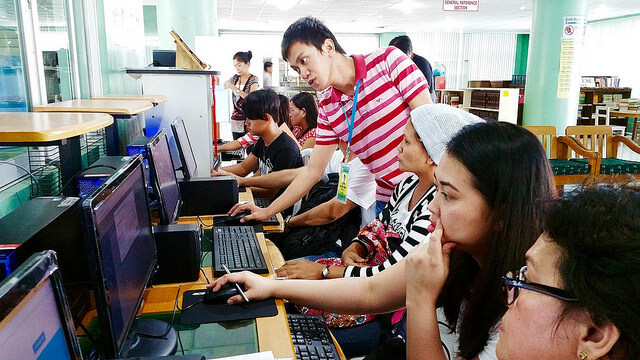Last week, the United States government took an important step toward ensuring universal access to affordable Internet, when the country’s Federal Communications Commission (FCC) approved a broadband subsidy for low-income households. The subsidy of $9.25 per month is designed to close the digital divide by alleviating the cost barrier to getting online for low-income Americans. It represents a further push by the FCC to recognise broadband as a public good (similar to water and electricity) and a right.
In the developing countries where the Web Foundation works, the priority is to invest more in rural infrastructure and provide community public access solutions such as free internet in libraries and community centres, or free municipal wi-fi. The 2015-16 Affordability Report published by the Alliance for Affordable Internet, which WF leads, highlighted the reality that even “affordable” Internet prices remain out of reach for the majority of women and poor people. That means public access is critical to enabling universal access.
We’ve seen successful efforts to prioritise public access across developing countries using a range of tactics — for example, free or subsidised access at libraries, community centres and other gathering points, or via public WiFi schemes. Thailand has connected 2,300 community-based ICT centres to broadband; the Philippines has committed resources to establishing free WiFi in schools and hospitals; Mozambique has provided free and low-cost access and digital training programmes in marginalised communities; Peru has used resources to extend fibre rollout and access in rural areas; and Mexico has provided high-speed Internet access to over 11,000 schools and community centres and across 9,000 public access spaces.
For the most part, these initiatives, like the US broadband subsidy, are funded through national Universal Service and Access Funds (USAFs). Governments must commit to ensuring the availability of public or low-cost broadband services, digital tools, and digital training for those citizens that remain outside the margin of market-driven connectivity efforts, and must lead efforts to guarantee the allocation of the resources and funding necessary to see these efforts through. As the US and other examples show, there are various approaches to expanding access for those marginalised populations that are disproportionately underrepresented online. But there are always certain elements critical to the success of these initiatives, no matter the type or the country: strong government leadership and clear national policies reflecting a vision of a truly inclusive digital society.
You can learn more about the role of USAFs in expanding access by reading A4AI’s paper, “Universal Access and Service Funds in the Broadband Era: The Collective Investment Imperative”. More detail on specific policy recommendations around public access initiatives can be found both in the 2015-16 Affordability Report, as well as the 2014 Affordability Report. We welcome discussion – please free to leave your thoughts in the comments below.
